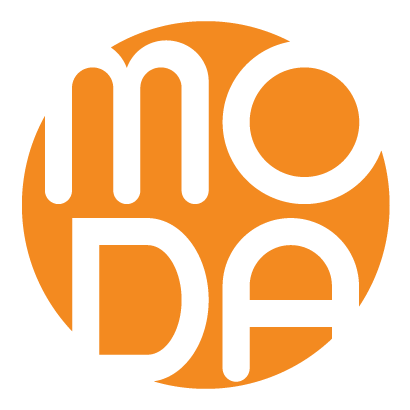Flex Is Like A Fin!

Fortunately, I have some answers.
The reason why the fins on a Moda surfboard are placed more forward than on conventional surfboards is so that they're under your back foot for better feel and control.
For example, conventional shortboards are best ridden from the tail so your front foot is near the center of the board and your back foot is on the tail, over the fins. In contrast, we've found that a Moda surfboard feels and performs best when ridden from the center so that the board flexes around you, just like on a snowboard. A centered stance means there's enough nose to flex and keep the board from submarining, and plenty of tail to flex around your back foot when turning. And, a centered stance lets the surfer make use of the entire rail length more easily and more often.
Long story short, a centered stance is the optimal position on a surfboard that flexes. Because centered is more forward than a conventional tail stance, fin position moves forward as well.
And it's really not that much numerically. Conventional surfboard side fins are generally 12" from the tail. The fins on Moda's 4'10" design are 14" from the tail, just 2" more forward. Again, 2" may not seem much numerically but they make a big improvement to the control and feel considering the centered stance.
Regarding the twin fin setup, the reason for that is because in my experience, flex means a center fin doesn't add control, or feel.
Generally speaking, in a traditional multi-fin setup, the side fins turn the surfboard while the third or center fin provides turning hold because it's pretty difficult to change a surfboard's direction if its tail keeps sliding out. This is easily seen when comparing the tight turning of a conventional three fin shortboard with the slidey nature of a twin fin fish, even of fishes with modern narrow tails.
In my experience surfing Moda surfboards, lack of cornering hold hasn't ever been an issue, despite only two fins, because of flex. I'm not an academic expert on fluid dynamics, but I have a theory on why flex means cornering hold.
When turning a Moda surfboard, cornering forces flex the board so that its rocker matches the arc of your turn. The harder or tighter the turn, the more rocker because of more cornering force. My theory is that increasing the rocker while cornering stalls the surfboard, causing it to submerge and deflect more water. To be clear, stalling decreases lift, not necessarily speed. This is the same principle as airplane wings deploying their flaps to decrease lift by increasing wing curvature (it's the air brakes that largely slow down a plane). By submerging and deflecting more water while cornering, hold is provided more by the board itself and less by the fins. In other words, flex means the board itself, particularly the tail behind your back foot, serves like a third fin!
Again, while we know flex with twin fins shred, that's just my armchair theory on how it works.
I've actually surfed Moda boards with no fins at all, and it works surprisingly well! The boards didn't slide out on open faces, even steep close outs. Some speculate this is because Moda surfboards have so much effective rail combined with bodyboard style-chined rails. But finless is certainly not as fun to me because fins help a lot in catching waves. Like on other finless designs such as alaias, if you're not paddling towards the beach, it's pretty tough to catch a wave. If you're chasing down a wave where you'd take off at an angle, often it'll spin you a round and roll through, or you get pitched. In my experience, taking off at an angle is extraordinary difficult on any finless surfboard.
But the fact that Moda surfboards surf surprisingly well finless excites me on how flex will evolve surfboard design in the future.
I'm not saying that flex makes fins obsolete, or that a twin fin setup is the best with flex. This has just been my experience with flex, and we're just starting to scratch the surface of how much flex affects surfboard design, and in what ways. I look forward to the day when surfboard shapers are exploring different directions in flex. At least we know that surfboard flex is super fun! And also safe!
Questions or comments? I'd love to talk about them! Send them to @modasurfboards on Twitter, and happy Mother's Day!
Leave a comment
Comments will be approved before showing up.



